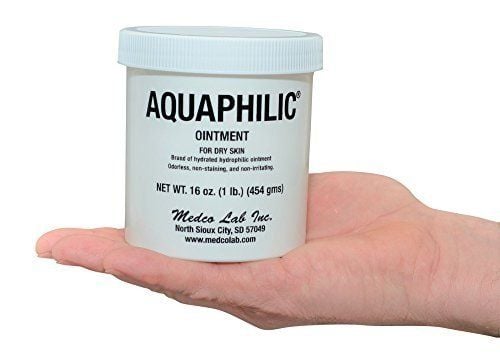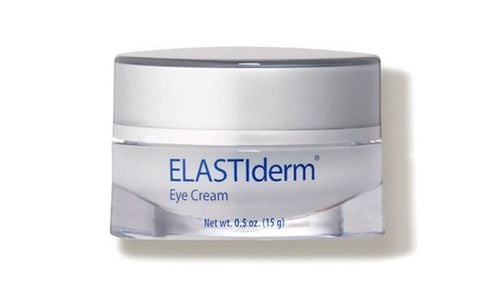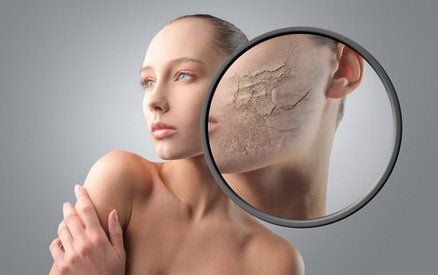This is an automatically translated article.
Melasma is a common skin condition that causes patchy brown, tan, or bluish-gray spots due to an overproduction of pigment in the skin. Because of cosmetic limitations, detecting any more melasma makes a woman always worried and longing for how to prevent melasma and treat freckles effectively.1. What is melasma? What is the cause of skin pigmentation?
Skin discoloration is very common and is most commonly seen in women of reproductive age. In particular, melasma is a form of facial hyperpigmentation and is usually found in three different areas of the face: the jawline, the middle of the face, and on the cheeks. Many people will notice melasma on the bridge of the nose, chin, and forehead, but melasma can also appear on other areas of the body, including the neck, chest, or arms — any area of skin exposed to a lot of sunlight. sunshine.Melasma does not leave long-term consequences for health. However, this problem makes many women worry, constantly searching for what causes melasma as well as how to prevent melasma and freckles. Accordingly, there are many ways to reduce the appearance of this skin condition, but the effectiveness will depend on the cause of melasma:
Genetics and gender The susceptibility to melasma is multifactorial. causative, which means that many different genetic factors contribute to it. For example, people with darker skin types have a higher risk of melasma.
Melasma can be familial. Recent studies have demonstrated that nearly half of all women with melasma have a family member who also has it. Therefore, if you are a woman and your mother has melasma, there is a high chance that you will also have this condition.
Besides, gender is also another big factor that can cause melasma. Although numbers vary between ethnic groups due to skin type and sun exposure, studies have found prevalence rates for women to range from 6:1 to high. 39:1 compared to the incidence of melasma in men.
Sun exposure This is the most common cause of skin pigmentation. There are a number of suggested explanations for why this is so but they can all be summed up by saying that UV rays from the sun cause the release of certain 'inflammatory' chemicals that irritate the skin. melanocytes in the skin overproduce pigment. This increased production of pigment can cause the skin to become tan, but it can also cause melasma to flare up or become darker.
That is why people often notice that their skin pigmentation appears when they are exposed to the sun a lot.
In addition to exposure to the sun, too much artificial light can also make melasma worse. Regular exposure to high heat sources, scientifically known as infrared radiation, can also worsen melasma.
Hormones Hormones are a common cause of melasma, although the relationship is still poorly understood. The researchers think that pigment-producing skin cells have receptors that can bind to estrogen and progesterone. Therefore, this may be part of the reason why women get melasma more often than men is due to higher levels of natural estrogen in the body.
In addition, about 25% of women will develop melasma as a direct result of contraceptive use and of these, about 90% will also experience more severe melasma during pregnancy.

Làm thế nào để ngăn ngừa nám da là câu hỏi mà nhiều chị em thắc mắc
Stress: Although psychological stress is not a known cause of skin irritation, some researchers suggest that it is still well known. considered a possible cause of melasma. Stress causes the body to increase the hormone cortisol, which in turn can affect the amount of estrogen in the body. So be comfortable with yourself and your skin.
Thyroid problems: The thyroid gland is located in the area below the neck and plays an important role in the body's endocrine system. The thyroid gland's secretion product is thyroxine, which plays an important role in the normal functioning of many cells in the body, including muscles, heart, digestive system, hair, and skin. Accordingly, among patients with hyperpigmentation, up to 20.3% had thyroid dysfunction.
Certain medications and skin products: Research has shown that taking medications, especially those to prevent seizures, is associated with flare-ups of melasma. Additionally, inflammation caused by skin irritants is one of the most studied reasons for melasma. Skin irritants include some perfumes, soaps, and cosmetics. For people with melasma due to genetics, gender, and skin type, the use of these products can contribute to inflammation, which can aggravate the condition.
2. How to prevent melasma?
If you already have tanning due to melasma, there are several ways to effectively manage the condition. Although some hyperpigmentation can be permanent, certain treatment options can significantly reduce the appearance of discoloration in the skin.Treatment and prevention of melasma at home Everyone can completely perform methods of treating melasma or freckles at home. Managing this skin condition starts with understanding the above modifiable causes of melasma, such as reducing stress, avoiding birth control pills or skin irritants, as well as getting screening tests done. control thyroid function.
If you are still struggling with melasma, make sure to do the following well to help treat freckles, help skin tone more evenly.
Apply sunscreen every day: One of the best ways to treat and prevent melasma is with proper sun protection. Because sun exposure can cause hyperpigmentation, sunscreen should be applied every day, whether it's sunny or overcast. Always choose a sunscreen with broad spectrum protection and remember to reapply at least every two hours. If you plan to go swimming or do activities that cause you to sweat a lot, reapply sunscreen more often.
Wear protective clothing: Sunscreen is the number one priority, but everyone can increase sun protection by adding a wide-brimmed hat or wearing layers of clothing to block the sun.
Shade to cover the skin: If going outdoors, choose a place with lots of shade. Also, wear sunglasses to shield the sensitive skin around your eyes, but make sure you choose the right glasses. Avoid sunglasses with metal rims as they can attract heat and, when placed on the skin, make melasma worse.
Do not wax: Try not to wax regularly as this can cause immediate skin inflammation that aggravates melasma.

Thoa kem chống nắng mỗi ngày giúp điều trị và ngăn ngừa nám da
3. Specialized treatment
For some people, melasma is short-lived, but others may struggle with this skin condition for years. In these cases, dermatologists can help with melasma as well as freckles with a number of different ways as follows:Hydroquinone: This is the first product to treat melasma. Applying Hydroquinone to the skin in cream, lotion, gel or liquid form will lighten the skin.
Tretinoin: To enhance and accelerate the effects of hydroquinone, a dermatologist may prescribe a supplement with Tretinoin.
Corticosteroids: In addition to the prescription products containing the previously mentioned hydroquinone and retinoid ingredients, if the retinoid helps speed up skin cell renewal, adding corticosteroids will help reduce inflammation. According to one study, nearly 70% of patients saw about 75% improvement in their skin pigmentation after just two months of using this product.
Chemical peels: By using mildly abrasive chemicals to remove the top layers of skin from the face, peels help to bring out a more even skin tone. After this treatment, the skin will be ruddy and sensitive, almost like a mild sunburn. After a few days, the skin will begin to peel off, revealing a new, more even skin tone.
Microdermabrasion: Regular microdermabrasion treatment can help reduce the appearance of melasma, as this procedure both removes skin cells that have been affected by hyperpigmentation and helps to increase the appearance of pigmentation. cell change.
Laser treatment: Many lasers can make melasma worse, but there are certain wavelengths that can help reduce the appearance of melasma.
In summary, since melasma can be affected by immutable factors such as hormones and genes, it is sometimes difficult to find the answer on how to prevent melasma. However, if you understand the known causes of melasma and know how to prevent it, as well as actively apply the above freckle treatments, the condition of hyperpigmented skin will be improved somewhat and may even be possible. It helps to prevent the disease from coming back after it has been treated.
If you have a need for consultation and examination at Vinmec Hospitals under the national health system, please book an appointment on the website (vinmec.com) for the best service.
Please dial HOTLINE for more information or register for an appointment HERE. Download MyVinmec app to make appointments faster and to manage your bookings easily.













